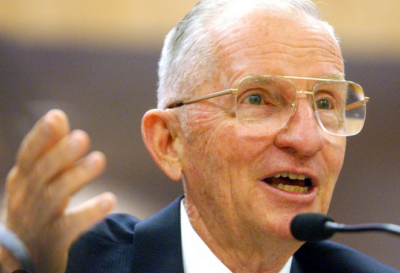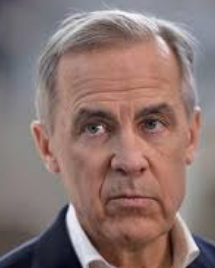April 16, 2025
BURLINGTON, ON
Ross Perot, who ran for president in 1992 had it right when he called NAFTA a ‘giant sucking sound’. NAFTA has not been a great deal for America, or Canada, especially when it comes to the automobile. Between 1994 and 2004 Canada’s share of North American auto production tumbled from almost 15% to just over 8%. The US lost significant market share as well. And Mexico became the big winner – rocketing from barely 7% to over a quarter of all the cars built in this continent.
Donald Trump had ranted but done little in his first term to correct that trade imbalance, ultimately endorsing the USMCA which replaced NAFTA. But once re-elected he armed himself with ‘yes men’ and set out to change the way America operates. And in the on-and-off world of Trump’s import tariffs he has now whacked the auto sector with 25%.
Canada has a long history of auto production. Ford Motors started operations here in 1904, and by 1923 Canada became the second largest auto producer in the world and a major exporter of autos and auto parts. Today we’re not even in the top ten.
So, those autoworkers who are being laid off in Windsor and Ingersoll have more than Mr. Trump’s 25% tariffs to blame. But the tariff threat has put a chill in everyone working upstream and downstream in the auto industry. The mere suggestion of plant closures at Honda put all of Ontario on edge, for example.
It was Mr. Mulroney who killed the Canada-US auto trade pact in favour of his multi-sectoral trade deal with the Americans (NTA). He wrote off the auto pact which had ensured that the big three auto companies would build at least one car for every one they sold here. And then Mr. Chretien brought Mexico into our trade deal and the three amigos created NAFTA…and that giant sucking sound.
Not everyone is crying doom and gloom about Trump’s automobile tariffs. A recent article in ‘Driving’ magazine (see links) in fact, is rather upbeat about the prospects for the Canadian auto industry. To a large extent that is because of the way the Carney government has responded with our own counter tariffs and the provision of support for the Canadian auto makers to minimize the impacts.
Mark Carney has spoken about re-imaging Canada’s manufacturing sector, and re-engineering our economy. He has referenced the need for public involvement, public-private partnerships and greater foreign investment in rebuilding our manufacturing sector, and especially the auto and defence industries. And he (if he’s still PM) and Trump have agreed to start negotiations next month on sectoral trade arrangements, which will form the backbone of our future trading relationship with the US.
In the meantime Canadians need to focus on our own future. That means doing more of what we have started doing even in the brief moment since Trump’s tariffs were announced – building Canadian, growing Canadian and buying Canadian.
 Ray Rivers, a Gazette Contributing Editor, writes regularly applying his more than 25 years as a federal bureaucrat to his thinking. Rivers was once a candidate for provincial office in Burlington. He was the founder of the Burlington citizen committee on sustainability at a time when climate warming was a hotly debated subject. Ray has a post graduate degree in economics that he earned at the University of Ottawa. Tweet @rayzrivers
Ray Rivers, a Gazette Contributing Editor, writes regularly applying his more than 25 years as a federal bureaucrat to his thinking. Rivers was once a candidate for provincial office in Burlington. He was the founder of the Burlington citizen committee on sustainability at a time when climate warming was a hotly debated subject. Ray has a post graduate degree in economics that he earned at the University of Ottawa. Tweet @rayzrivers
Background links:
Giant Sucking Sound – More Perot –
Trump on Trade – Global Car Production – Auto Decline – Upbeat –



















I find it incredible that our so-called leaders would not have recognized that Honda and Toyota ere frankly the only automakers producing large quantities of valued cars in Ontario. The Big 3 are a shell of what they once were in Ontario and that was/is not destined to change.
If they were doing their jobs for Canadians, they would have been proactive and way ahead on this however, they are using the current tariff situation for political posturing. First Ford with an unnecessary election and now Carney who occasionally comes out of hiding to either announce conservative platform ideas or to double down on Trudeaus agenda with respect toto pipelines and emission caps. Both of these fools with their massive support of a failed EV battery industry.
Poilievre is on the right track announcing his parties support for eliminating GST on vehicles assembled in Canada.
Expect a similar story to surface with respect to Toyota any day now.
My colleague and I in five minutes identified at least six mining projects in Canada that are not proceeding, no financing. If we took an hour, we would identify many more.
If Carney is elected and essentially continues with the Trudeau ideological agenda…….nothing will change for the better, investment will not come. There will be much more pain ahead. It was not Trump’s tariffs that got us here as the Liberal Party is insisting and profiting in Canadians fear of…….
I am not that optimistic.The 2 top reasons that auto companies have built plants in Canada is the 60-70 cent Canadian dollar and OHIP which is a massive subsidy compared to US health care costs.The BIG 3 have been reducing production here for many years.I believe that there will be little if any new investment here from now on.
Hard to image how Carney will reimagine Canada’s manufacturing industry with so many link and business deals to Trump, Jarod Kushner and Elon Musk. We are already seeing the results of a failed consumer carbon tax and the start of Liberal failed investments in EV battery manufacturing.
The business model behind the green agenda (interesting term) is not about reducing CO2, but rather influencing/lobbying government policy then investing or using private equity to purchase companies that benefit the most from those revised policies.